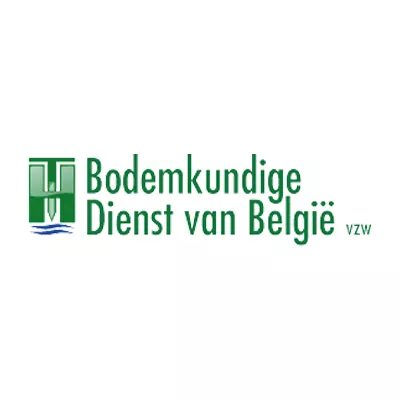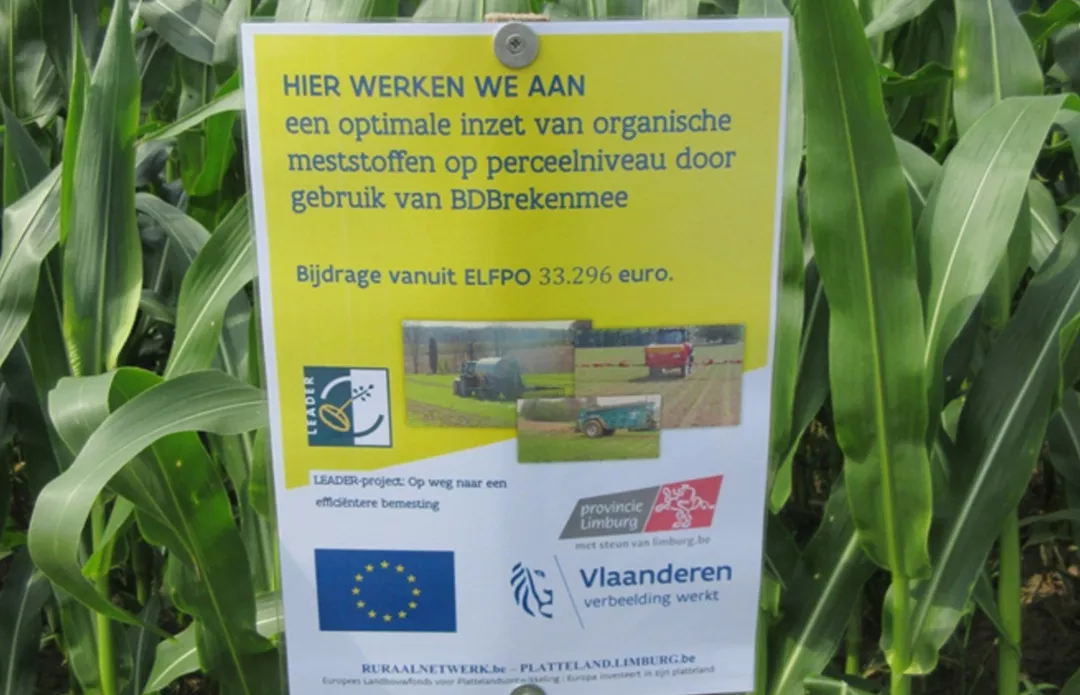General information
RDP Priority
- P6. Social inclusion and local development
RDP Focus Area
- 6B: Local development
RDP Measure
- M19: LEADER/CLLD
Summary
In Flanders, there is significant pressure on rivers and groundwater bodies from the diffusion of agricultural sources of nitrogen and phosphorus. Hence, the legislation concerning fertilisers is strongly focused on water quality and sets restrictions on the amount of nitrogen and phosphorus that should be used in crop production. At the same time, organic matter in soils has been declining partly due to the limited use of organic fertilisers, e.g. manure.
This CAP-funded project aimed to provide farmers with practical tools and accurate information about efficient fertilisation, considering the needs of their soil and the nutrient composition of different types of organic manures to enable them to fertilise efficiently within the legal framework.
Results
The fertiliser manual received particularly positive reviews from all stakeholders and inspired other agricultural institutions as a good example of low threshold communication material geared towards farmers.
493 farmers participated in the project’s meetings and demonstration actions.
The project results have been made available for use by the additional 3 544 farmers in the region.
An audience of some 3 100 farmers were reached through the project’s press outreach.
It is estimated that 482 farmers used the calculation tool during the project.
The project provided information to around 400 agriculture students.

Promoter
Bodemkundige dienst van België vzw
Funding
Total budget - 102 450.00 (EUR)
EAFRD - 33 296.25 (EUR)
National/Regional - 33 296.25 (EUR)
Private - 35 857.50 (EUR)
Resources
Documents
Links
Context
In the 1990’s, the Flemish Government, in compliance with the Nitrates and Water Framework Directives, introduced legislation to regulate the use of fertilisers in agriculture. The aim of this legislation was to improve water quality, which was severely affected after many years of excessive application and fertiliser runoff. The new rules limited the use of nitrogen (N) and phosphorus (P) in crop production. However, during the same period it became apparent that organic matter in the soil and soil quality had started to decline. This was attributed to several reasons, including the limited use of organic fertilisers. Farmers were aware of the need to maintain the soil’s organic matter content, but they argued the legislation did not allow them to use enough organic manure, so they needed to supplement with inorganic fertilisers.
Recent changes in the legislation have given more freedom to the farmers as well as more responsibility, requiring more efficient and intelligent fertiliser use. For example, organic fertilisers are highly variable in composition and often do not have the ideal N-P ratio to cover a crop’s needs within the legal framework. The correct type and amount of organic manure in combination with mineral fertilisers, however, should help farmers to achieve optimal plant production while also contributing to organic matter in the soil and preserving water quality by reducing nutrient loss. Thus, knowledge sharing and capacity building was needed to systematically enhance farmers’ fertilisation approaches.
Objectives
The project aimed to raise awareness among farmers and agriculture students about efficient organic fertilisation in accordance with national legislation provisions.
Activities
Project activities included:
A communication campaign and awareness raising in the Haspengouw region. The project team explained organic fertilisation at fourteen annual farmers’ winter meetings, organised two field demonstrations and made presentations on several other occasions. Five articles were published in the agricultural press. The communication actions presented the latest available information on organic fertilisers, provided instructions and updates about the availability of digital tools, demonstrated field results and provided accurate information about the legislation. This information was summarised in a manual which was distributed to farmers and agriculture students.
An upgraded calculation tool for fertilisation (BDBrekenmee). This online decision support tool was designed to be used by farmers for fertilisation planning according to the needs of each land parcel. Farmers can use this application on their computer, their mobile phone, or their tablet. The tool provides advice on fertiliser application based on the type of crop and the nutrients available at each location. Based on this data, the tool calculates the amount of nutrients that need to be supplemented with fertilisers. The tool also takes into account the composition and amount of each nutrient in different organic fertilisers in order to calculate the rate of fertiliser application required to meet each of the nutrient levels needed (N, P, K, Mg, Ca, Na). It then calculates the amount of nutrients that should be added using synthetic fertilisers.
The project updated the available body of knowledge regarding the composition and amount of each nutrient in organic manure and this information was integrated into the digital tool. The BDBrekenmee tool was upgraded so that farmers can now also use the results of their own sampled organic fertilisers to calculate tailored application rates based on the specific nutrient content. A demo and an instruction guide on the use of the digital tool was developed and distributed.
Organised demonstrations on the fertilisation value of different types of organic manure. The project organised demonstrations using different types of manure, including liquid manure (slurry), stable litter and compost, to illustrate the range of options for intelligent fertilisation. The idea was to combine the maximum amounts of organic fertilisers allowed by the legislation with only supplementary mineral fertilisers.
Project coordination and administration. This was a partnership project involving Thomas More University and the advisory services of an organic farming research centre in Flanders, PIBO Campus. The project brought together those with expertise on organic fertilisers and the legislation and those with good connections to farmers and agriculture students. The lead partner managed the project coordination, administration and follow-up.
Main results
The fertiliser manual received particularly positive reviews from all stakeholders and inspired other agricultural institutions as a good example of low threshold communication material geared towards farmers.
493 farmers participated in the project’s meetings and demonstration actions.
The project results have been made available for use by the additional 3 544 farmers in the region.
An audience of some 3 100 farmers were reached through the project’s press outreach.
It is estimated that 482 farmers used the calculation tool during the project.
The project provided information to around 400 students.
Key lessons
The project stressed the difference between the composition and the absorption efficiency of each nutrient by adding the same amount of nitrogen to different types of organic fertiliser. This showed that slurry provided more mineral N to the crop than stable litter and compost.
Thus, the project stressed the importance of combining organic fertilisers with mineral fertilisers to supply the nutrients which were insufficient due to the limits on organic fertiliser use.
